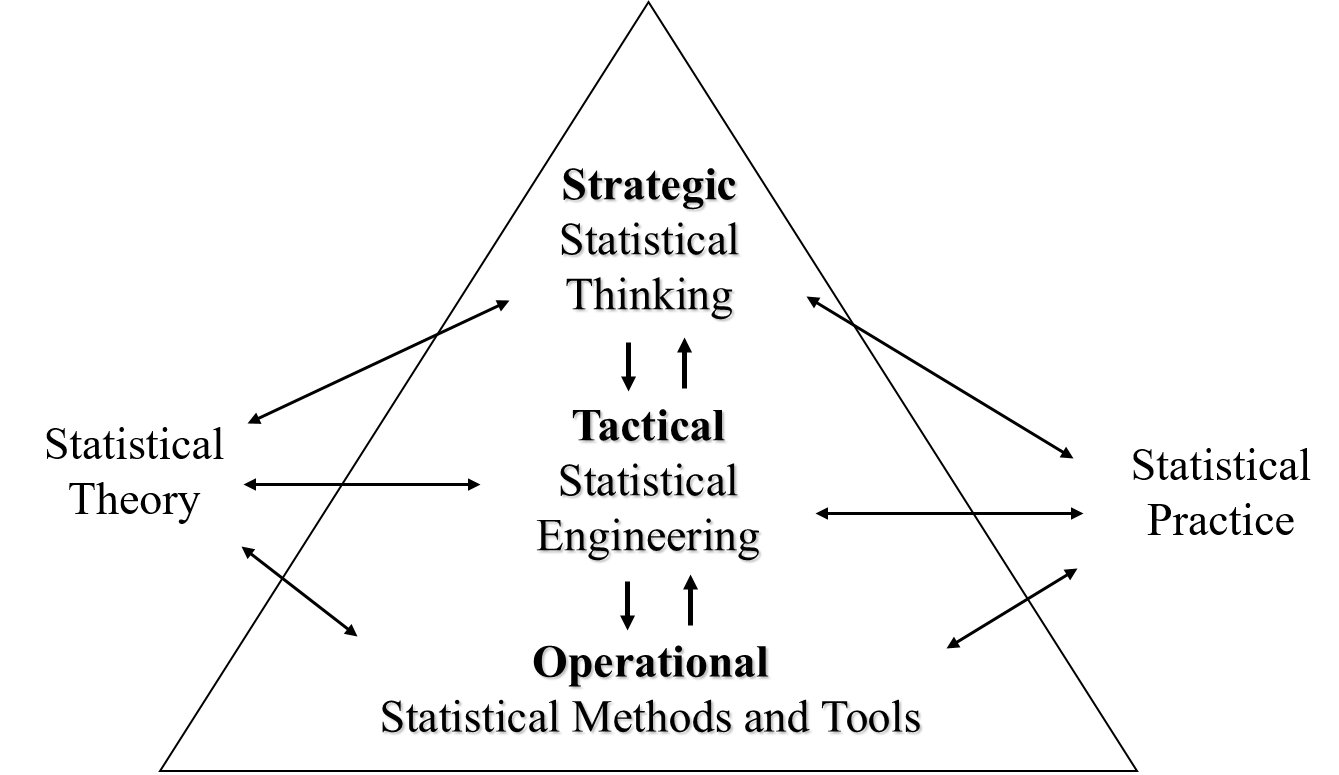- Home
- Explore Statistical Engineering
What is Statistical Engineering?In a quick nutshell, statistical engineering is the discipline dedicated to the art and science of solving complex problems that require data and data analysis. These problems almost always are unstructured and typically large, crossing several disciplines. The key is how to provide enough definition and structure to create a reasonable solution path to a truly sustainable solution. Our discipline provides guidance to develop appropriate strategies to produce sustainable solutions. It discusses which statistical and analytic tools/methods are appropriate depending on the circumstances, and it outlines how to create sustainable solutions efficiently and effectively. Statistical engineering is the discipline that helps practitioners determine “the right tool for the right job at the right time, properly applied.” Real problems, particularly large, complex, unstructured problems, are not so simple. There is no single “correct” method, and in most cases multiple statistical methods and perhaps multiple disciplines are needed. In other words, a sequential approach is needed. |
Phases of Statistical EngineeringThere is no “cookbook” that will lead practitioners step by step through successful solution of all such problems. However, there is a framework to give some guidance as to how to think about approaching such problems. The figure, based on Hoerl and Snee (2017), shows the phases that statistical engineering projects typically go through. |
Why Statistical Engineering?Problem solvers are faced with enormous problems such as: lower cost healthcare, cleaner environment and globally competitive manufacturing. A cohesive body of knowledge for solving such problems is lacking. Collection and analysis of high quality, relevant data is critical to success. Big Data approaches are useful but not sufficient. Statistical Engineering provides the integration needed to fill the gap. The need for Statistical Engineering educational programs and increased published applications of the discipline is vital and urgent. |
|
Core Processes Used in Statistical Engineering· Data acquisition, including surveys and experiments · Data exploration and visualization · Model building · Drawing inferences (learning) from models · Solution deployment and sustainability | Benefits of Statistical Engineering· More effective problem solving · Discipline that can be learned, utilized and enhanced · Better, more effective use of data · Sustainability of solutions and results · Broader understanding and utility of statistical thinking and methods |
For more information:For more information, join ISEA and gain access to the Handbook of Statistical Engineering, case studies, and other publications by thought leaders. · Watch: JMP Analytically Speaking with Roger Hoerl · Join ISEA to gain access to the Handbook of Statistical Engineering |
.png)



